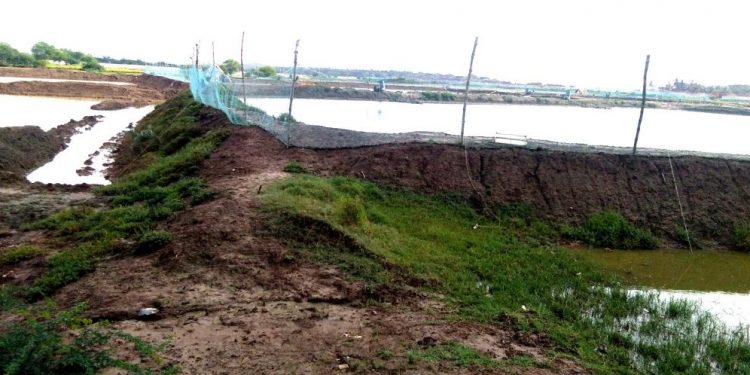Kendrapara: The lockdown imposed in the country to check spread of coronavirus has served as a blessing for the prawn cultivators in the district with mushrooming of illegal prawan gheries in the seaside villages, a report said.
The mushrooming of these prawn gheries has posed serious threat to the mangrove forests in the coastal intertidal zones as these serves as a protective barrier against natural calamities like cyclonic storms. In 2011, the district had mangrove forest cover of over 183 sq.km of area out of which 40 sq.km of forest cover is no more now.
This is because the chemical wastes released from these prawn gheries have resulted in destruction of biological diversity and mangrove forests in Bhitarkanika National Park in the district. The Bhitarkanika National Park is spread over Rajnagar and Mahakalpara blocks in the district.
These mangrove forests stabilise the coastline, reducing erosion from storm surges, currents, waves, and tides. The intricate root system of mangroves also makes these forests attractive to fish and other organisms seeking food and shelter from predators.
Environmentalists say that the chemical discharge from these prawn gheries have destroyed more mangrove forest than what was destroyed in the last year’s cyclonic storms Fani and this year’s Amphan. As a result, the mangrove forests which act as protective shield against rising tidal waves and cyclonic storms have been pushed into peril.
Environmentalist Hemant Kumar Rout said that the chemical discharge from prawn gheries and the surging tidal waves have destroyed around 30 sq.km of coastline in Bhitarkanika during last four years. He added the district of Kendrapara is deemed to be a hub of natural calamities. Natural calamities like floods, cyclonic storms and surging tidal waves have become a regular affair for the residents living along the coastline in the district.
Moreover, the surging tidal waves have led to constant erosion of coastline posing threat to the residents in the area.
The forest department has spent over a crore in afforestation to protect the coastline. However, without the demolition of these prawn gheries the project has failed to achieve any success, experts added.
Environmentalist Sibashis Mohanty said that it is the mangrove forests which are fit only to protect the shorelines from surging waves, damaging storm and gusty winds, waves, and floods. It also helps prevent erosion by stabilising sediments with their tangled root systems. They maintain water quality and clarity, filtering pollutants and trapping sediments originating from land.
The prawn gheries have resulted in destruction of many rare trees and medicinal plants. The high-handedness of the prawn mafia, timber smuggling and lack of awareness among residents for plantations are to be blamed for the destruction of mangrove forests.
Nature lovers Radhakant Mohanty and Manoj Kumar Nayak said the presence of mangrove forests has been conducive in establishment of Dangamal crocodile breeding centre and the breeding site for the rare Olive Ridley turtles at Gahirmatha.
They pointed out that the refugees, who have settled down in Mahakalapara, Rajnagar and Rajkanika blocks, have established prawn gheries by encroaching on the forest land in Bhitarkanika. This is because the saline water of mangrove forests is helping them in prawn cultivation for which they are destroying the forest cover.
They demanded the government to intervene failing which the residents will take to streets and launch an agitation.
When contacted, sub-Collector Jyoti Shankar Mohapatra said that the demolition drive for eviction of the illegal prawn gheries will be intensified in coming days and meanwhile the forest department, coast guards unit and marine police are keeping a close watch on illegal entry of Bangladeshi refugees.
PNN






































